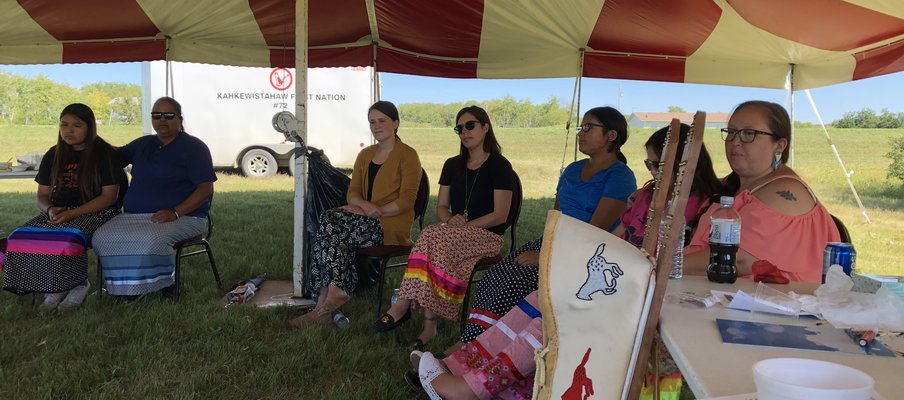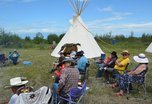Restoring Worldview: Centralizing Traditional and Holistic Birthing Practices in First Nations Communities

Related Programs

LeslieAnne Wilson’s interest in the birthing process grew with every invitation she had to be present with family members going through labour over the past few decades. It wasn’t until she came across a group of Indigenous women practicing in midwifery and Doula training that she decided to expand her knowledge base and obtain a formal education in the process. Now she practices as a Traditional Birth Worker.
With Nakota and Cree ancestry, it became a priority for her to incorporate traditional practices in her training. “I wanted to start addressing wellness in a holistic way, and that can only begin at birth,” she says.
She returned to her home community of Kahkewistahaw First Nation and decided she wanted to share her knowledge within the community. Tapping into her knowledge base of formal Doula training and traditional practices, she decided to apply for SaskCulture’s Aboriginal Arts and Culture Leadership Grant to assist her with organizing a two-day workshop and camp for Indigenous women this past summer.
“It was the first time something like this happened in Kahkewistahaw. I wanted to explore programming that promoted health and wellness within our women and the family system,” she explains adding that the project received great interest and support from Kahkewistahaw Health Centre, as well as community members, Elders, nurses and pre-natal workers from surrounding reserves. She calls the cultural gathering “Restoring Worldview.”
She says the gathering experienced fluctuating participation, but averaged 30 participants per day from Kahkewistahaw, as well as surrounding reserves. Each day started with a Women’s Water Ceremony, and each day closed with a Pipe Ceremony. “Women brought their children in for the day, so I ensured there were always Elders present,” she recalls. “Maintaining the balance between youth and Elders was an important element to this gathering.”
Further, she explains the complicated relationship to cultural and traditional practices faced by some Elders in her community. “A lot of Elders who attended residential school weren’t given a chance to learn holistic teachings in this way,” she says. “So we were aiming to build the community back up in this way, starting at home with the family and beginning at birth.”
LeslieAnne Wilson says men were also welcome to attend, and a few were present throughout the gathering as well as many youth. She says this opened up the opportunity to talk about menstruation cycles in a ceremonial way. “It is the younger ones that are continuously coming back to these kinds of cultural teachings,” she says. “And it is the youth that will carry on these teachings.”
She reflects on the eagerness and willingness from participants, and describes the gathering as “a wake-up call for those wanting to learn more about their culture.”
The gathering had the exact impact she was hoping for, which was specifically to centralize the natural and holistic importance in birth, as opposed to centralizing the process in terms understood through Western medicine and practices.
She is already in the planning stages of the upcoming cultural gathering within her community. “Next, we’d like to see something take place in a natural setting,” she says. “This way, we can explore the important relationship in our teachings that take us back to the land.”
This project received funding from SaskCulture's Aboriginal Arts and Culture Leadership grant.




